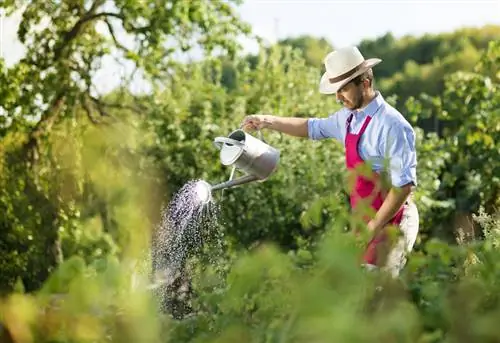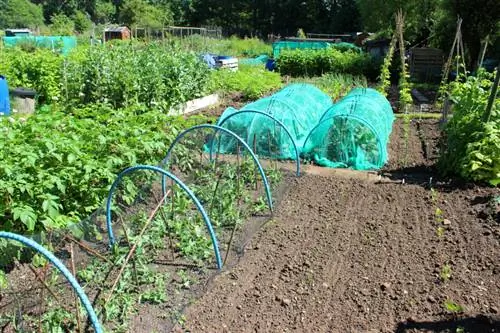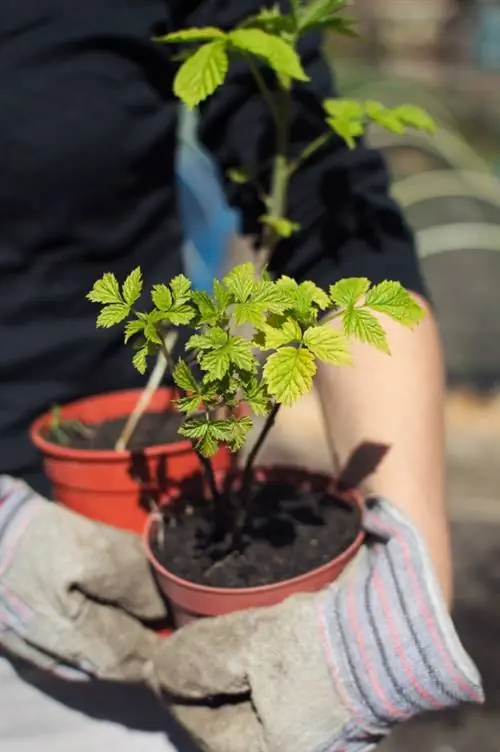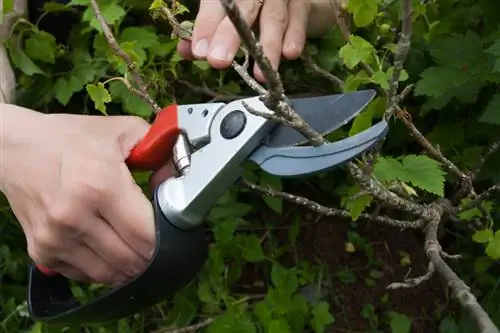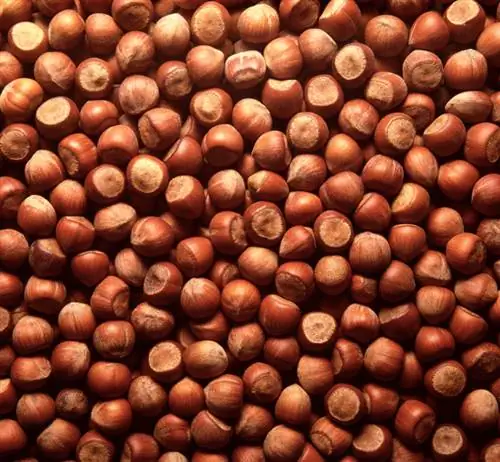- Author admin [email protected].
- Public 2023-12-16 16:46.
- Last modified 2025-01-23 11:19.
Raspberries from your own garden are probably one of the tastiest fruits. Growing it is quite easy if you pay attention to a good location and follow a few care tips. What you need to pay attention to when growing.
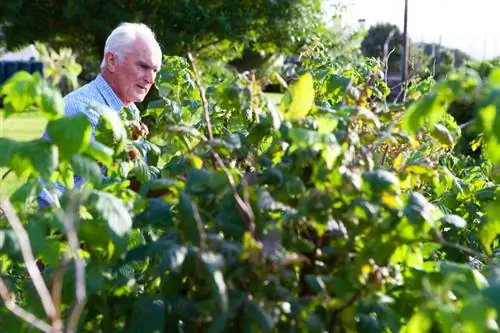
How to successfully grow raspberries in the garden?
When growing raspberries in the garden, a sunny, humus-rich location is important. Pay attention to loose soil, sufficient watering, plant supports and avoid calcareous soil and waterlogging. Care for the shrubs with proper pruning and tie them to a suitable structure.
The ideal location in the garden
The most important point for growing raspberries in the garden is the location. If you meet the following conditions, you can count on a rich harvest:
- Light location in the sun
- Humose soil
- Loose soil without compaction
- Appropriate watering
- Planting supports
You should definitely avoid:
- Calcareous soil
- Waterlogging
- Too little space for other berry bushes
- Weeds under the bushes
Ensure optimal care
Raspberry bushes don't need a lot of care. However, there are a few things you need to do if you want to harvest raspberries regularly over several years.
Raspberry bushes should never be too wet or too dry. If there is waterlogging, there is a risk that the plants will be damaged by root rot or the dreaded cane disease. If it is too dry, the fruits will not develop but will dry out on the bush.
Very dense soils should therefore be loosened particularly well before planting so that the irrigation water can drain away. You can protect dry soils from drying out with a layer of mulch (€14.00 on Amazon).
It's all about the right cut
Raspberry bushes need to be trimmed at least once a year. When it is best to prune depends on whether the raspberries are summer or autumn.
Summer raspberries and autumn raspberries differ not only in terms of harvest time, but also in terms of care. For summer raspberries, only the harvested canes are cut off to the ground immediately after the harvest. Cut back autumn raspberries completely after harvest.
Tie up raspberry bushes
Raspberry bushes need scaffolding to tie the canes on. This is the only way the fruits get enough sun. It also makes harvesting easier.
Summer raspberries are grown on a scaffold to which the rods are tied in a V-shape. A stick framework is more suitable for autumn raspberries.
Tips & Tricks
Raspberry bushes tend to overgrow. Therefore, either choose modern varieties that do not spread as much, or lay out a root barrier before planting.


